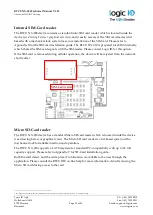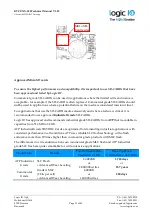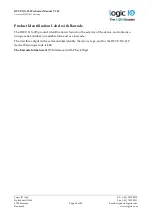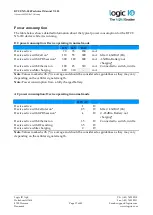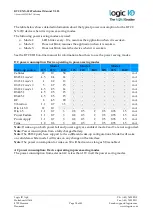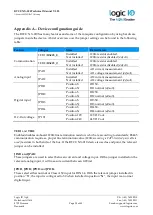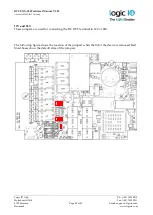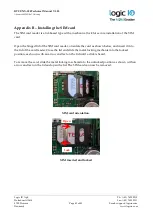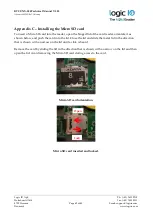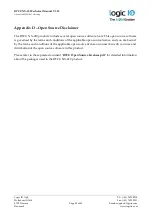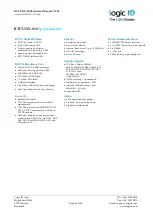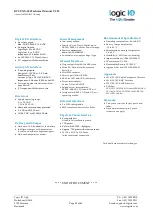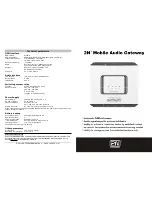
RTCU NX-900 Technical Manual V1.02
Advanced M2M/IIoT Gateway
Logic IO ApS.
Ph: (+45) 7625 0210
Holmboes Allé 14
Fax: (+45) 7625 0211
8700 Horsens
Page 31 of 45
Email: [email protected]
Denmark
Internal Li-Ion battery
The RTCU contains an internal Li-Ion battery for operation even when the external power is absent
making it possible to report power loss etc. Please note that when external power is removed, the
device will be powered down by default. This setting can be changed as documented in the RTCU
IDE documentation.
The battery charging is completely automated and handled internally by the RTCU device
–
leaving no need for user interaction. Different kinds of functions (Battery low, Charger enable,
charging status, etc.) are available to the user application.
The charge current is relatively high, for a shorter charge time, as specified in the technical
specification. Make sure both power supply and cables can handle the high current.
The battery will be charged whenever a power fail has occurred to establish the capacity thus
making the battery ready for the next power fail. A maintenance charge will start every 20 days
after the last charge. This is to compensate for the battery self-discharge etc.
By default, the battery cannot be charged above 45
C or below 0
C. The RTCU offers charging
down to -
10 ˚C usin
g a specialized algorithm to protect the battery.
If the temperature is above 45
C the charging will not start and will be postponed until it is below
this threshold.
The temperature has a very high influence on the battery capacity. At 0
C the capacity has dropped
to 60% of the initial capacity and it falls dramatically at lower temperatures.
The battery cycle (numbers of charges and discharges) also influences the capacity. After 300 cycles
the capacity has dropped to approximately 80% of the initial capacity.
Warning
Misusing the RTCU device may cause the built-in battery security circuit to be damaged.
•
Do not place the RTCU device in high temperature locations such as in direct sunlight or near
engines. Using the RTCU device in this environment may result in loss of battery performance and a
shortened life expectancy.
•
Do not expose the device to water, saltwater or allow the battery to get wet.
•
Avoid strong impacts and shocks.
For more information regarding the environmental limitations, see “RTCU NX
-910 Specificatio
ns”
below or consult the RTCU NX-910 datasheet.


















